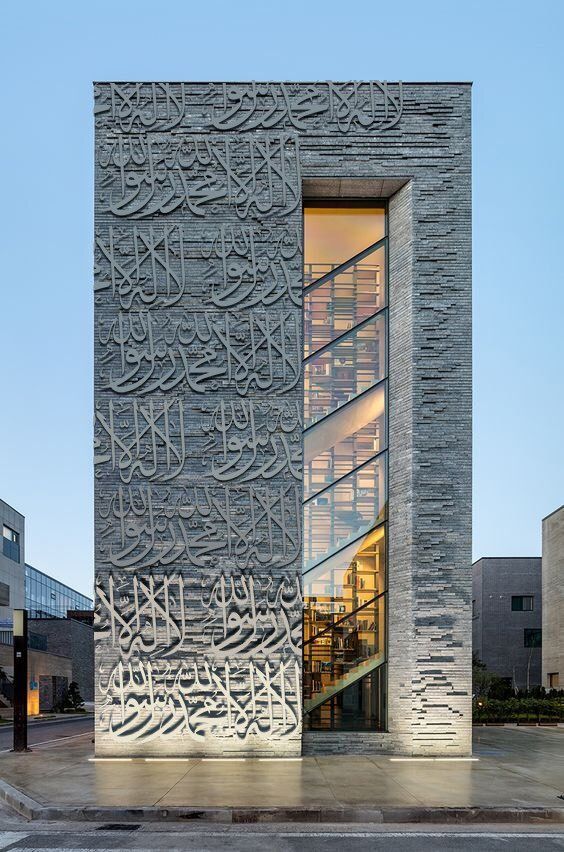#14463. Calligraphic Façade: Monumental Islamic Aesthetics in Contemporary Architecture

Before us stands a remarkable example of contemporary architecture where traditional Islamic calligraphy has been transformed into a monumental façade element. The main façade features a massive gray stone wall with relief Arabic inscriptions covering nearly the entire surface. This façade design creates an astonishing interplay of light and shadow, giving the building depth and texture even under uniform lighting conditions.
The vertical section with panoramic glazing forms a striking contrast to the monolithic stone surface. The interior space, bathed in warm light, is visible through this light opening, creating the effect of a "cut" in the monumental structure. The diagonal lines of the stair railings behind the glass add dynamism to the overall composition.
The wall cladding technique using thin stone plates of varying depths creates a textured surface that changes its appearance depending on the angle of illumination. This approach can be adapted for private construction using relief panels or decorative masonry with depth variation. The effective combination of closed textured surfaces with precise light openings is an idea relevant to contemporary façades of any scale.